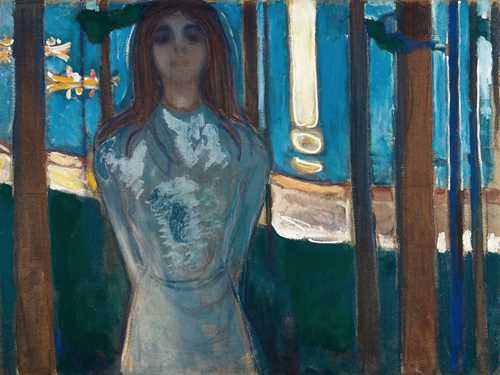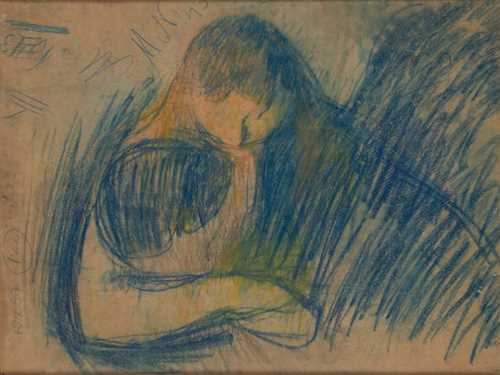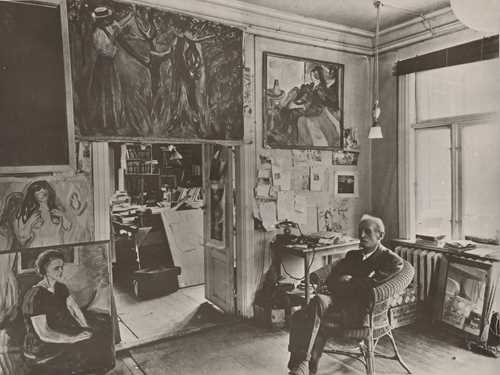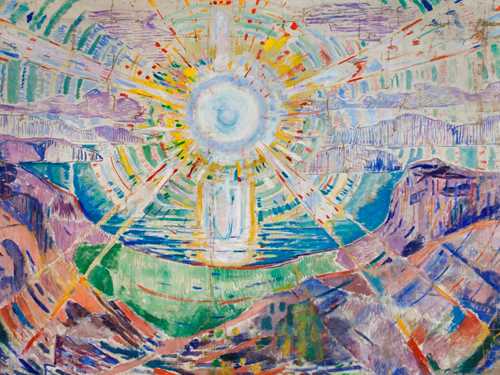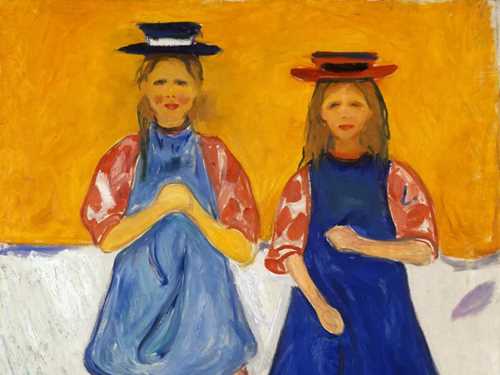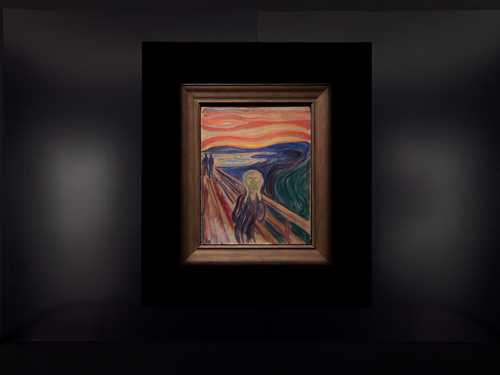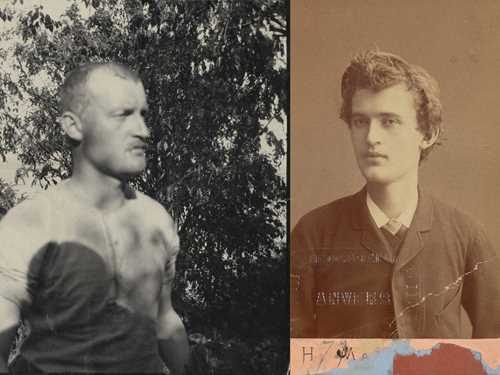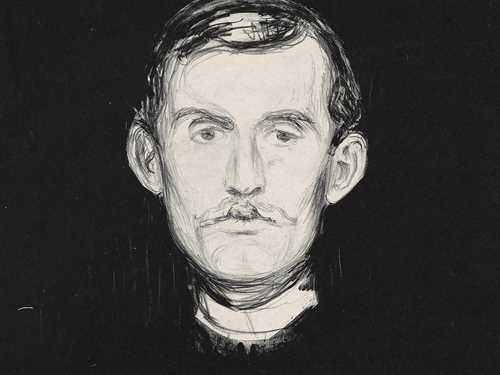Vampire gets new life
This February, an extensive and unique restoration process for the painting Vampire starts. The work will be completed in August, and the painting is then again ready to be shown to the public.
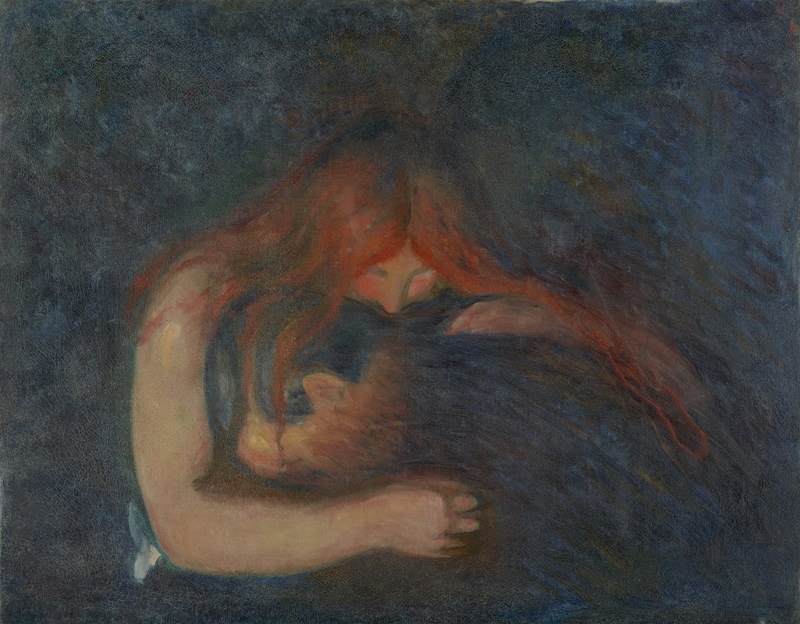
Edvard Munch: Vampire. Oil on canvas, 1893. Photo: Munchmuseet.
Vampire is one of Edvard Munch's most famous motifs. When one of the four paintings was put up for sale at Sotheby's in New York in 2008, the price ended at NOK 258 million. The version referred to in this case was stolen in 1988, but recovered.
Edvard Munch's sometimes non-traditional use of materials and experimental techniques give his artworks a completely unique look – and a number of challenges for the museum's conservators, who are responsible for the preservation and research of the collection. When it comes to the very famous painting Vampire, however, it is primarily the varnish that was used when the painting was conserved in 1957 that is the cause of the problems we encounter today. Varnish is a translucent, lacquer-like layer protecting paintings from dust, dirt and humidity, and also saturates the colors and creates an even surface gloss.
Read more about the story behind Vampire, which was originally titled Love and Pain.
damaged works
When Oslo municipality took over the collection after Munch's death in 1944, many of the works were badly damaged. This also applied to Vampire, where the paint layers were damaged and extensive part of the canvas was missing, most probably as a result of moisture damage.
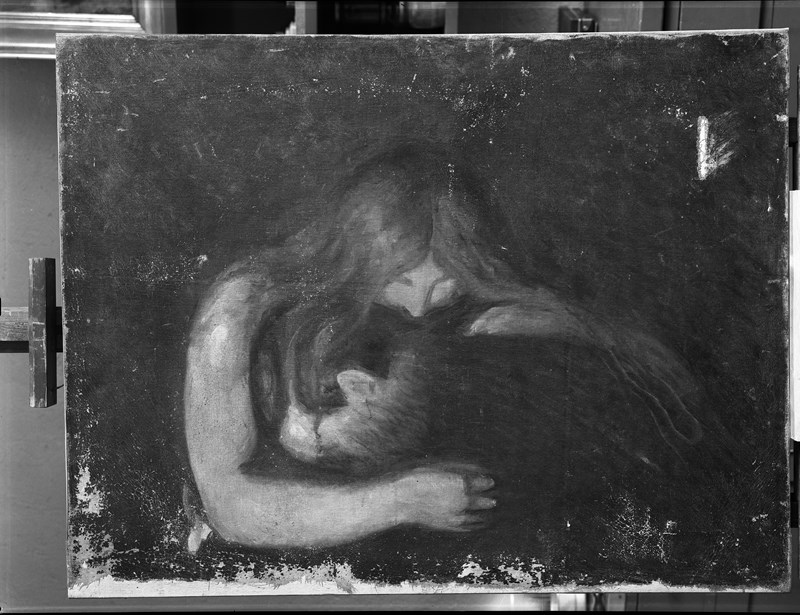
Vampire photographed before conservation in 1957. In the best sense, and according to the methods of the time, the painting was glued onto a new canvas and put under great pressure. Large areas of the image were retouched and finally two layers of varnish were applied. Photo: Munchmuseet
In 1957, the frail canvas was therefore lined – glued onto a supporting canvas – and the missing parts were filled and retouched to cenceal the damages. The retouching technique that was used is called tratteggio, and involves the conservator painting in losses with fine lines to make the painting appear complete when viewed from a distance, but recognizable at close range. The technique was developed for large works such as frescoes, and out of respect for the artist, so that the retouch can be recognised from the artist's original paint. However, it is much less often used on smaller paintings such as Vampire.
At this time, it was also common to varnish the surface, both for aesthetic reasons and to protect the paint layer. This was also done with this version of Vampire.
should be removed
The varnish poses several problems. Firstly, we assume that it has penetrated the color layers and changed the appearance of the painting. Secondly, the varnish’s adherence to the paint layer is stronger than the paint layer’s attachment to the canvas below. Thus it cups and pulls the paint up and together, and there is a risk of small pieces of both color and varnish falling off. Although one cannot determine with certainty what will happen if the painting is left in its current state, there is a great risk that the situation will worsen.
Between 2016 and 2018, 23 of Munch's varnished paintings were examined, among other reasons to find out to what extent the varnish layer was causing damage and whether it was justifiable to remove it. In the case of Vampire, it has been concluded that the varnish can and should be removed. The longer we wait, the more difficult it may become to remove it.
Without traces
The project that has now been initiated, has as its purpose to remove all traces of the restoration work that was carried out in 1957. First, the varnish layer will be removed using the latest and most gentle methods. Then, retouches and fillings will be removed, probably using the same methodology. In the report from the restoration in 1957, it can be seen that a layer of varnish has also been applied between the original work and the retouching, a so-called retouching varnish. This must also be removed before the work on rebuilding the painting can begin.
After the varnish, fillings and old retouches have been removed, the painting will appear with rather large damages and visible tears. New integrated retouches will then be applied - these should not be visible, but appear as an extension of the original paint layer. All the materials used will remain durable and stable, but also reversible. It is not uncommon to have to re-treat old retouches, as the retouches change in a different way to the original color layers, and thus will become visible over time.
change to preserve
MUNCH's guiding principle when it comes to aesthetic conservation, is to preserve the collection in the condition it was in when the municipality received it. Several of the paintings we exhibit have visible damage and marks that have become a natural part of the artworks.
The reason we choose a different approach with Vampire is that the painting has appeared complete for as long as it has been available to the public. This is simply how we recognize this work today. By treating it now, further degradation is stopped. The painting will be stabilized, and in the long run will appear in better condition than before this treatment.
The project is supported by Bank of America.
